I'm using Three.js and I wonder how to get all objects in a given area?
For example, get all objects that found in the green-square:

Solution:
getEntitiesInSelection: function(x, z, width, height, inGroup) {
var self = this,
entitiesMap = [],
color = 0,
colors = [],
ids = [],
pickingGeometry = new THREE.Geometry(),
pickingMaterial = new THREE.MeshBasicMaterial( { vertexColors: THREE.VertexColors } ),
pickingScene = new THREE.Scene(),
pickingTexture = new THREE.WebGLRenderTarget( this._renderer.domElement.width, this._renderer.domElement.height),
cloneMesh,
entities = inGroup ?
engine.getObjectsByGroup(inGroup) : engine.getRegisteredEntities();
pickingTexture.generateMipmaps = false;
//Go over each entity, change its color into its ID
_.forEach(entities, function(entity) {
if(undefined == entity.threeRenderable) {
return ;
}
//Clone entity
cloneMesh = entity.threeRenderable.mesh().clone();
cloneMesh.material = entity.threeRenderable.mesh().material.clone();
cloneMesh.material.map = null;
cloneMesh.material.vertexColors = THREE.VertexColors;
cloneMesh.geometry = entity.threeRenderable.mesh().geometry.clone();
cloneMesh.position.copy( entity.threeRenderable.mesh().position );
cloneMesh.rotation.copy( entity.threeRenderable.mesh().rotation );
cloneMesh.scale.copy( entity.threeRenderable.mesh().scale );
//Cancel shadow
cloneMesh.castShadow = false;
cloneMesh.receiveShadow = false;
//Set color as entity ID
entitiesMap[color] = entity.id();
self._applyVertexColors(cloneMesh.geometry, new THREE.Color( color ) );
color++;
THREE.GeometryUtils.merge( pickingGeometry, cloneMesh);
});
pickingScene.add( new THREE.Mesh( pickingGeometry, pickingMaterial ) );
//render the picking scene off-screen
this._renderer.render(pickingScene, this._objs[this._mainCamera], pickingTexture );
var gl = this._renderer.getContext();
//read the pixel under the mouse from the texture
var pixelBuffer = new Uint8Array( 4 * width * height );
gl.readPixels( x, this._renderer.domElement.height - z, width, height, gl.RGBA, gl.UNSIGNED_BYTE, pixelBuffer );
//Convert RGB in the selected area back to color
for(var i=0; i<pixelBuffer.length; i+=4) {
if( 0 == pixelBuffer[i] && 0 == pixelBuffer[i+1] && 0 == pixelBuffer[i+2] && 0 == pixelBuffer[i+3] ) {
continue;
}
color = ( pixelBuffer[i] << 16 ) | ( pixelBuffer[i+1] << 8 ) | ( pixelBuffer[i+2] );
colors.push(color);
}
colors = _.unique(colors);
//Convert colors to ids
_.forEach(colors, function(color) {
ids.push(entitiesMap[color]);
});
return ids;
}
The line engine.getObjectsByGroup(inGroup) : engine.getRegisteredEntities();
just return an array of entities, which in turn, I iterate over the entities:
_.forEach(entities, function(entity) { ...
Only entities that have the 'threeRenderable' property (object) are visible, therefore, I ignore those that doesn't have it:
if(undefined == entity.threeRenderable) {
return ;
}
then I merge the entity's cloned mesh with with the pickingGeometry:
THREE.GeometryUtils.merge( pickingGeometry, cloneMesh);
eventually, I add the pickingGeometry to the pickingScene:
pickingScene.add( new THREE.Mesh( pickingGeometry, pickingMaterial ) );
Then I read the colors of the selected area, and return an array of IDs.
You can checkout the Node.js game engine I wrote back then.